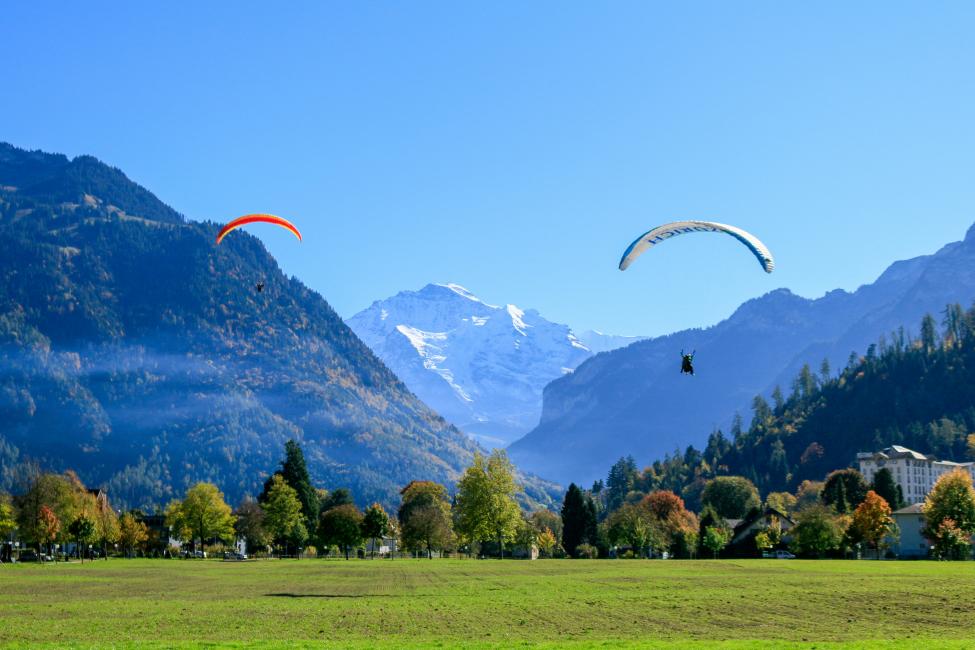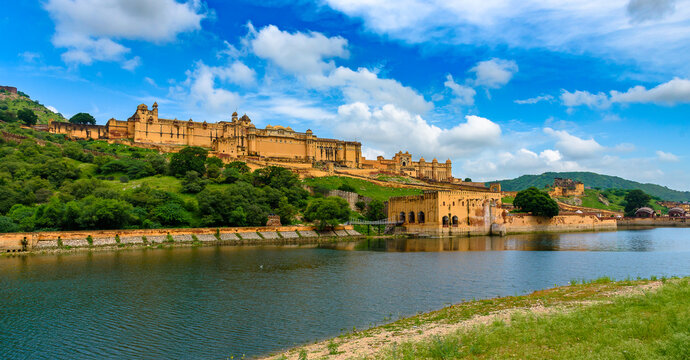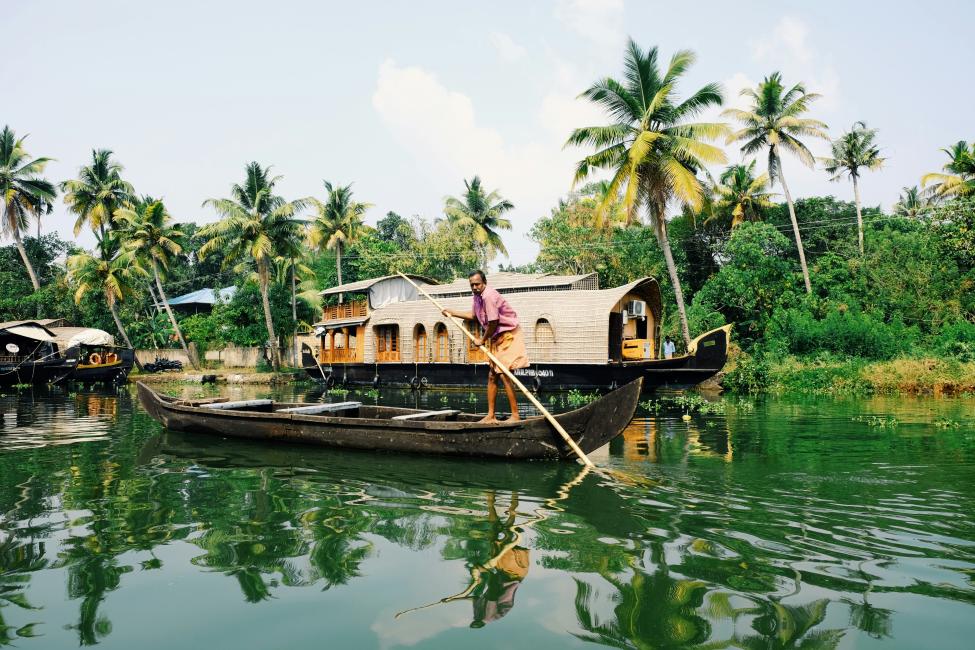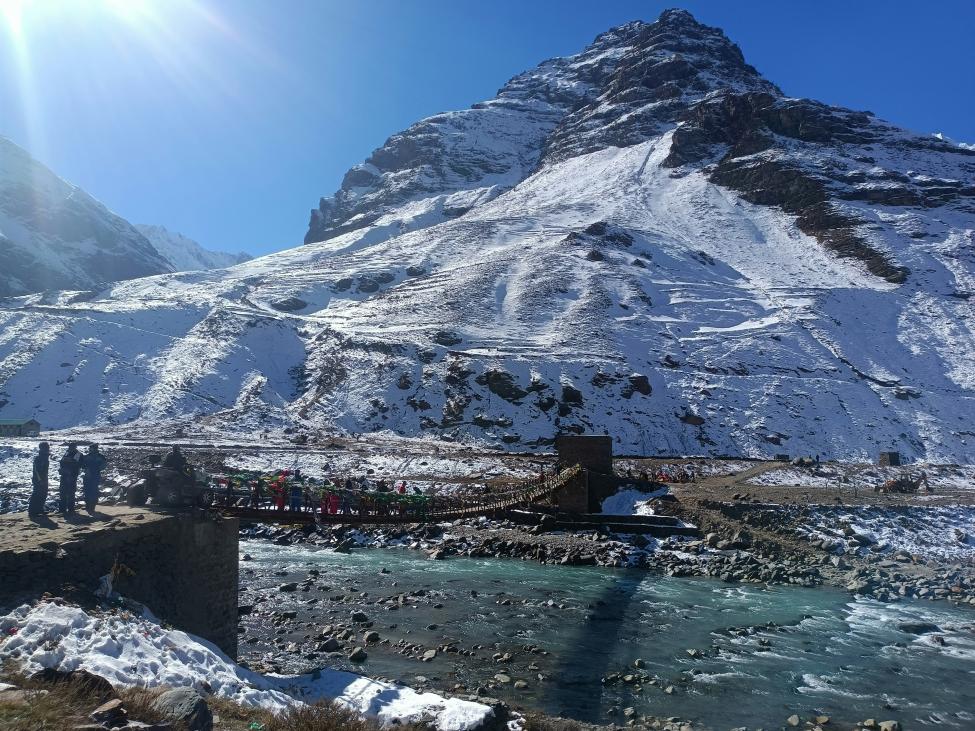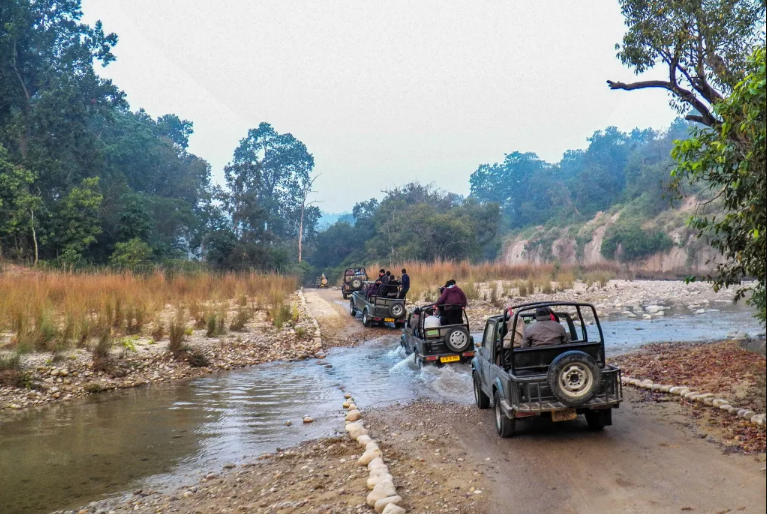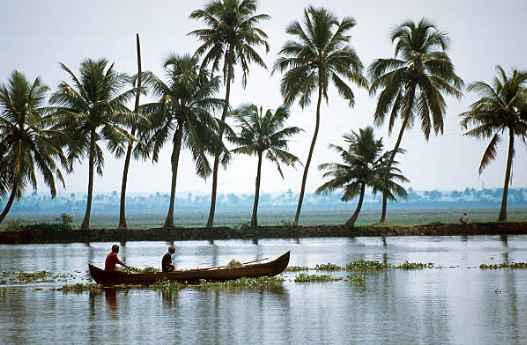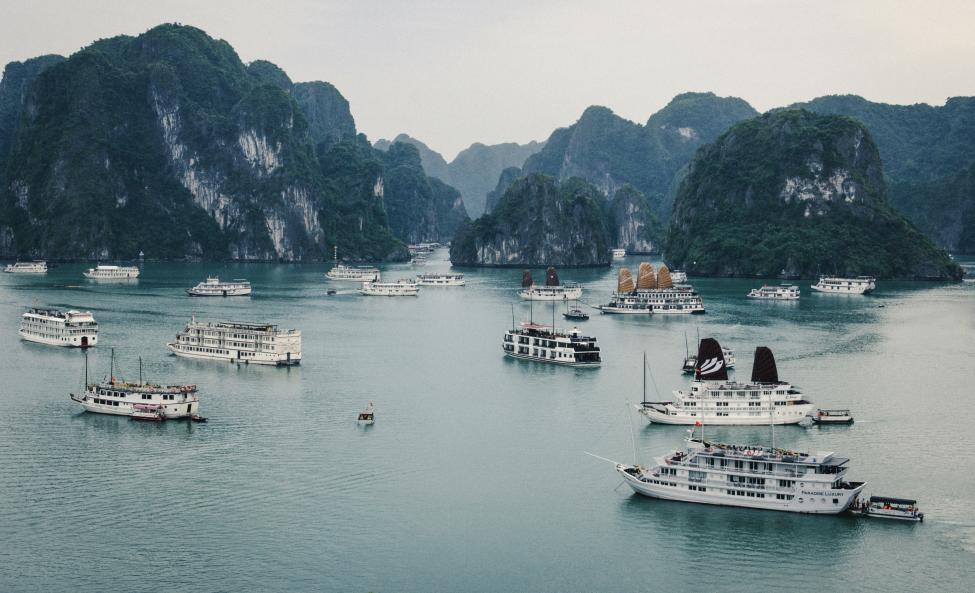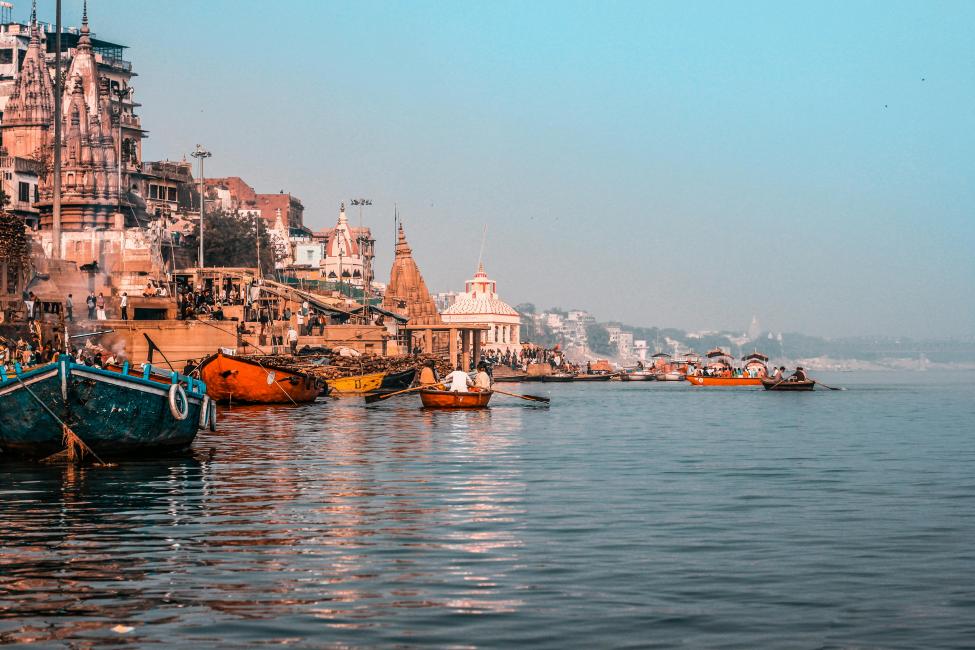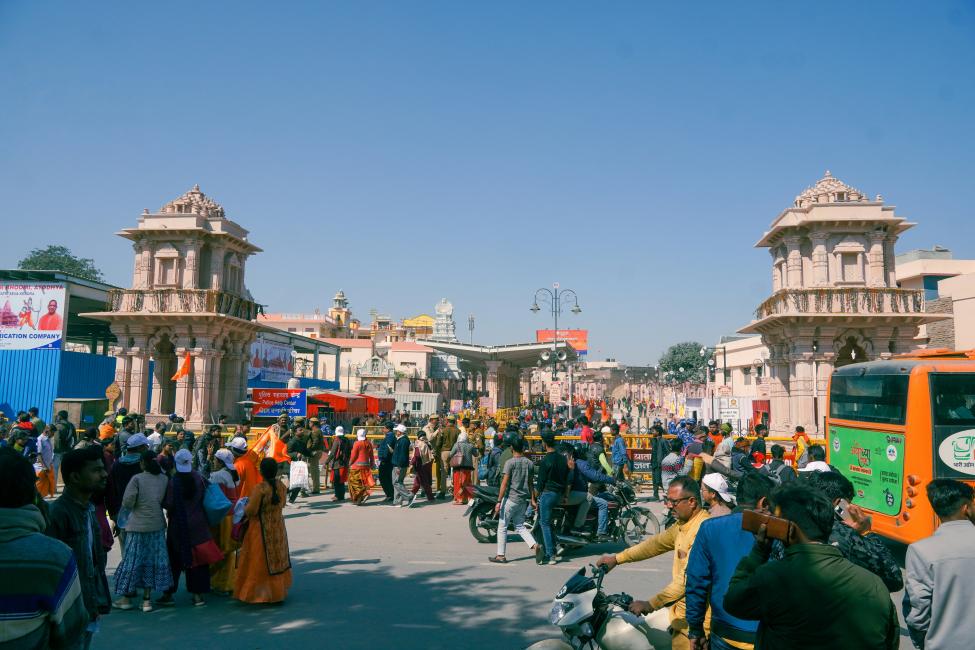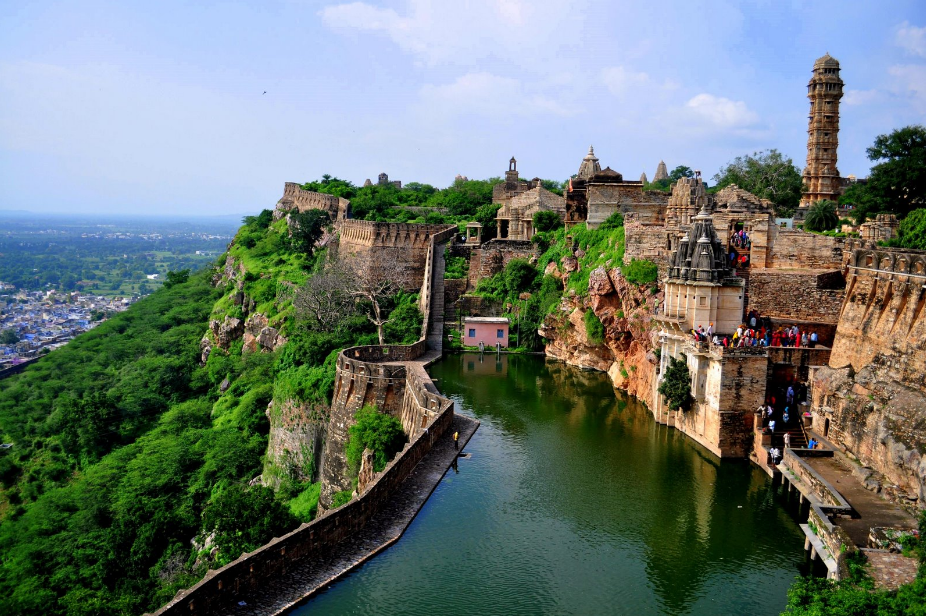 Chittorgarh Fort
Chittorgarh Fort
Chittorgarh - The Pride of Rajasthan's Royal Heritage
Chittorgarh, a historic city in Rajasthan, is known for its majestic fort and tales of Rajput valor. Explore iconic landmarks like Vijay Stambh, Rani Padmini Palace, and ancient temples. Perfect for history lovers, this travel guide covers top attractions, local food, and tips for your visit.
The City of Valor: A Traveler's Guide to Historic Chittorgarh
Perched majestically atop a 180-meter-high hill, the mighty Chittorgarh Fort is the heart and soul of Rajasthan’s legendary city - Chittorgarh. Once the proud capital of the Mewar Kingdom, this UNESCO World Heritage Site is more than just an ancient fortress - it's a living tale of Rajput bravery, honor, and sacrifice.
For travelers, history buffs, and cultural explorers, visiting Chittorgarh is like stepping into a chapter of India's heroic past.
A Glorious and Tragic History
The story of Chittorgarh Fort is a powerful blend of glory and tragedy, marked by three historic sieges that tested the courage of its Rajput defenders.
1303 - Alauddin Khilji’s Siege
Sultan Alauddin Khilji of Delhi attacked the fort, reportedly obsessed with the beauty of Queen Padmini. To protect their honor, Rani Padmini and thousands of Rajput women performed Jauhar, the ritual of self-immolation, rather than fall into enemy hands.
1535 - Bahadur Shah of Gujarat
Another brutal siege, this time by Bahadur Shah, led to the second Jauhar, led by Rani Karnavati, reaffirming the Rajput code of honor and sacrifice.
1567 - Akbar’s Siege
The final siege came at the hands of Mughal Emperor Akbar. After fierce resistance, the fort fell, and the third and last Jauhar took place. Soon after, the capital of Mewar shifted to Udaipur.
More stories and legends
The origin of the fort: According to one legend, the mythical warrior Bhima, from the epic Mahabharata, struck the ground here, causing a reservoir to form that later inspired the fort's construction.
The selfless nurse Panna Dai: When the royal family was forced to flee the fort, Panna Dai, the prince's nurse, sacrificed her own son by swapping him for the baby prince Udai Singh, saving the future king's life from an assassination plot.
The sacrifice of Jaimal and Patta: During Emperor Akbar's siege in 1567, two brave Rajput commanders, Jaimal and Patta, were left to defend the fort. They exhibited such extraordinary valor in a fight to the death that Akbar was impressed and ordered statues of the heroes to be built.
Best Time to Visit: October to March is ideal, with cool, pleasant weather - perfect for walking through the vast fort complex.
Best way to reach
- By Air: The nearest airport is Maharana Pratap Airport, Udaipur (approx. 70 km away).
- By Train: Chittorgarh has its own well-connected railway station.
- By Road: Accessible via major highways from Udaipur, Jaipur, and Kota.
Tips:
- Touring the Fort: Hire a local guide to understand the detailed history and hidden stories of the fort. Since the fort is massive, renting an auto-rickshaw or car inside the fort area is common and convenient.
- Don’t Miss: Light & Sound Show - Held in the evening at the fort, this show beautifully narrates the history of Chittorgarh with lights, music, and dramatic storytelling. A must-watch experience.
Places to visit in Chittorgarh
1. Chittorgarh Fort - The Largest Fort of India
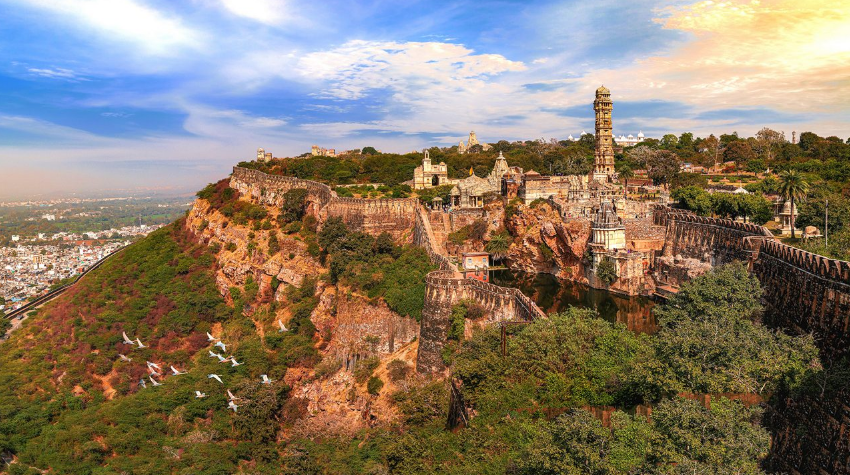
The Chittorgarh Fort, located in Chittorgarh, Rajasthan, is the largest fort in India and a UNESCO World Heritage Site. Sprawling across 700 acres, the fort is a symbol of Rajput bravery, honor, and sacrifice. Built in the 7th century by Maurya rulers, the fort has witnessed many battles, including the famous sieges by Alauddin Khilji and Bahadur Shah of Gujarat.
Inside the fort, visitors can explore magnificent structures like the Vijay Stambh (Tower of Victory), Kirti Stambh (Tower of Fame), Rana Kumbha Palace, Meera Temple, Padmini Palace, and several beautiful Jain temples. The fort’s history is closely linked to the legendary stories of Rani Padmini and Meera Bai, making it a place of great cultural and historical significance.
With its majestic gates, intricate architecture, reservoirs, and panoramic views, the Chittorgarh Fort remains one of the most captivating heritage sites in Rajasthan.
- Location: Chittorgarh, Rajasthan
- Timings: 9:00 AM - 6:00 PM
- Entry Fee: ₹50 (Indians), ₹200 (Foreigners), Free for children below 15
2. Tower of Fame (Kirti Stambh) - Symbol of Jain Heritage
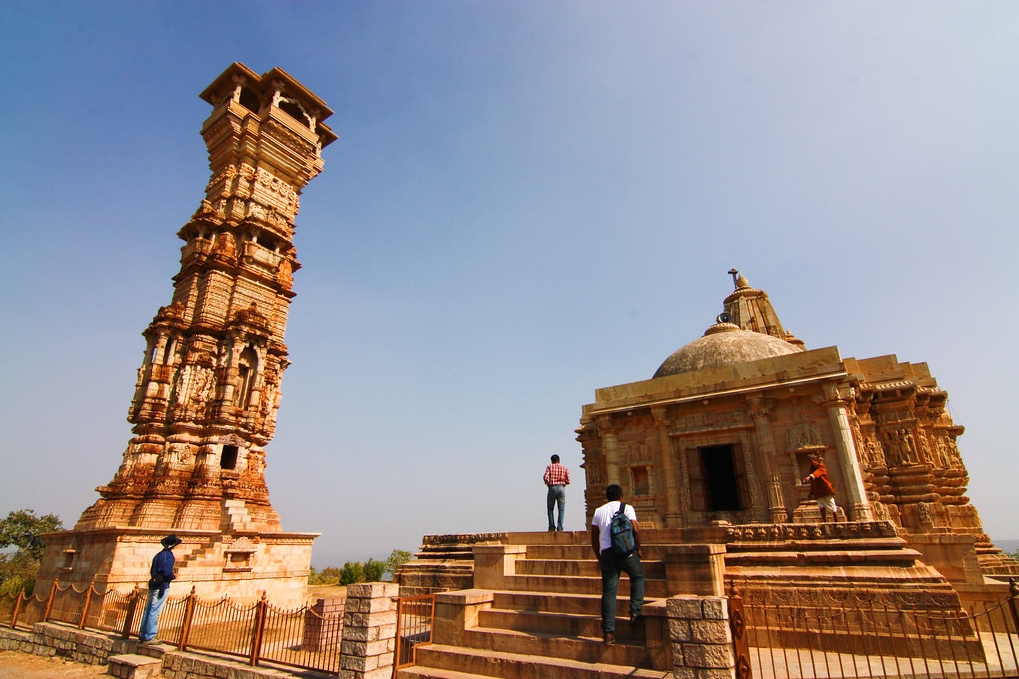
The Kirti Stambh, also known as the Tower of Fame, is a historic monument located within the Chittorgarh Fort, Rajasthan. This 22-meter-high tower was built in the 12th century by a wealthy Jain merchant, Jeeja Bhagerwala, to honor the first Jain Tirthankara, Lord Adinath.
The tower is beautifully carved with figures of Jain deities, intricate sculptures, and inscriptions that reflect the grandeur of Jain art and architecture. Dedicated to Jain heritage, the Kirti Stambh serves as a reminder of the religious harmony that existed in the region.
Unlike the more famous Vijay Stambh (Tower of Victory), the Kirti Stambh is smaller in size but equally fascinating due to its fine carvings and spiritual importance. Pilgrims and tourists alike visit this tower to admire its artistry and learn about the Jain influence in Mewar’s history.
- Location: Inside Chittorgarh Fort, Rajasthan
- Timings: 9:00 AM - 6:00 PM
- Entry Fee: Included in Chittorgarh Fort ticket
3. Rana Kumbha Palace - The Majestic Residence of Mewar Kings
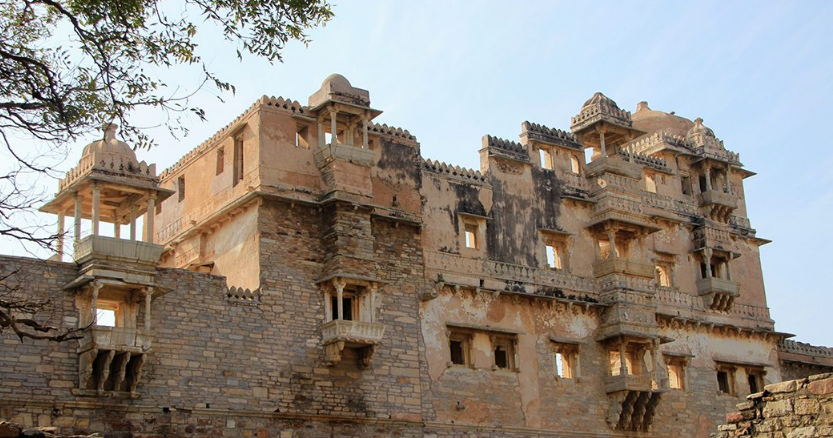
The Rana Kumbha Palace, located inside the Chittorgarh Fort, is one of the oldest and most significant structures of the fort. Built by Rana Kumbha in the 15th century, this palace once served as the royal residence of the rulers of Mewar, including the legendary queen Rani Padmini and Maharana Udai Singh, the founder of Udaipur.
The palace is an architectural marvel, featuring huge courtyards, underground cellars, stables, and balconies that reflect the grandeur of Rajput architecture. It is also associated with the tragic tale of Rani Padmini and the Jauhar (self-immolation), making it an important symbol of Rajput valor and sacrifice.
Though now in ruins, the palace walls still echo with the stories of bravery, sacrifice, and royal life. It is a must-visit for history lovers who wish to experience the heritage of Mewar.
- Location: Inside Chittorgarh Fort, Rajasthan
- Timings: 9:00 AM - 6:00 PM
- Entry Fee: Included in Chittorgarh Fort ticket
4. Vijay Stambha (Victory Tower) - Symbol of Rajput Bravery
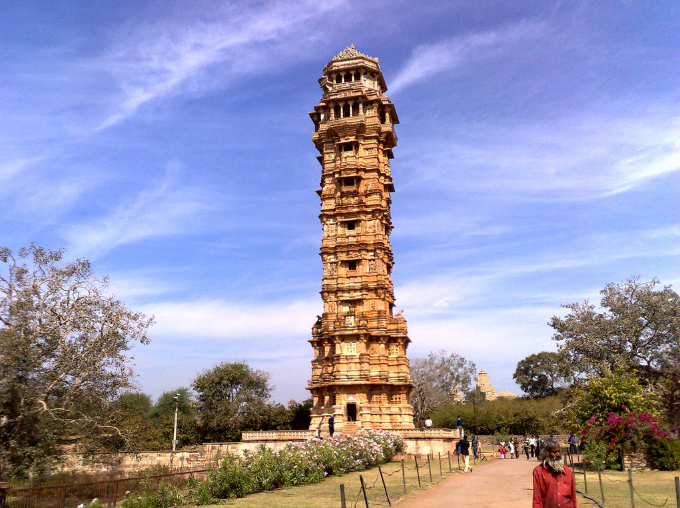
The Vijay Stambha, also known as the Tower of Victory, is one of the most iconic monuments inside the Chittorgarh Fort. This magnificent nine-story tower was built by Maharana Kumbha in the 15th century to commemorate his historic victory over the combined armies of Malwa and Gujarat in 1440.
Standing at about 37 meters high, the tower is a fine example of Rajput architecture, intricately decorated with carvings of Hindu deities, celestial figures, and mythological scenes. The inside of the tower has a narrow staircase of around 157 steps, which takes visitors to the top, offering a panoramic view of Chittorgarh Fort and the surrounding landscape.
The Vijay Stambha is not just a monument of architectural brilliance but also a symbol of Rajput courage and pride, representing the glorious past of Mewar. At night, the tower is beautifully illuminated, making it a breathtaking sight.
- Location: Inside Chittorgarh Fort, Rajasthan
- Timings: 9:00 AM - 6:00 PM
- Entry Fee: Included in Chittorgarh Fort ticket
5. Padmini’s Palace - The Legendary Queen’s Residence
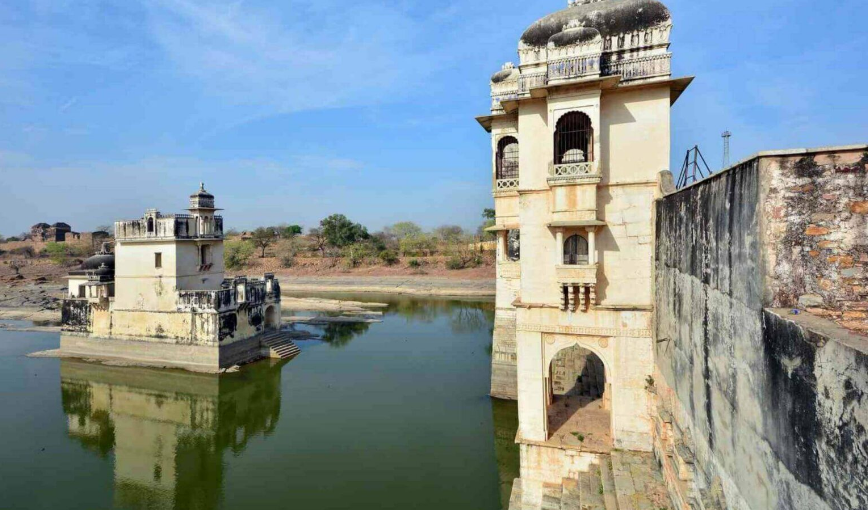
Padmini’s Palace, located inside the Chittorgarh Fort, is one of the most famous attractions, known for its beauty and the legend of Rani Padmini, the queen celebrated for her courage, honor, and sacrifice. Built in the middle of a lotus pool, the palace is surrounded by water, giving it a serene and romantic charm.
The palace is historically significant because it is associated with the story of Rani Padmini’s beauty, which led to Sultan Alauddin Khilji’s invasion of Chittorgarh in 1303. According to legend, Khilji caught a glimpse of Rani Padmini’s reflection in a mirror here, which fueled his desire to conquer Chittor. This eventually led to the famous jauhar (self-immolation) by Rani Padmini and the women of Chittorgarh to protect their honor.
Architecturally, the palace is a fine example of Rajput style, with pavilions, balconies, and a central water tank that reflects the structure beautifully. Visitors are drawn not only to its scenic beauty but also to the powerful story of valor, sacrifice, and pride that it represents.
Location: Inside Chittorgarh Fort, Rajasthan
Timings: 9:00 AM - 6:00 PM
Entry Fee: Included in Chittorgarh Fort ticket
6. Fateh Prakash Palace - A Regal Jewel of Chittorgarh
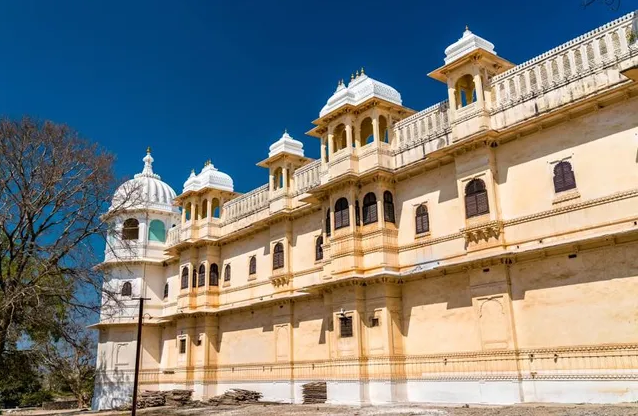
Fateh Prakash Palace, situated within the Chittorgarh Fort complex, is a fine example of Rajput grandeur and royal luxury. Built by Maharana Fateh Singh in the 19th century, this palace showcases the architectural brilliance of the Mewar dynasty.
The palace is admired for its elegant corridors, arches, balconies, and decorative pillars that reflect a blend of traditional Rajput and modern influences of that era. It was once the royal residence of the Mewar rulers and now serves as a museum that attracts history lovers and travelers alike.
Inside the palace, visitors can explore a wide collection of sculptures, ancient artifacts, weapons, paintings, and crystal items, offering a glimpse into the rich cultural and artistic heritage of Rajasthan. The palace also provides scenic views of the fort and surrounding landscapes, making it a perfect spot for photography and history exploration.
- Location: Inside Chittorgarh Fort, Rajasthan
- Timings: 9:00 AM - 6:00 PM
- Entry Fee: Included in Chittorgarh Fort ticket
7. Kalika Mata Temple - The Sacred Shrine of Chittorgarh
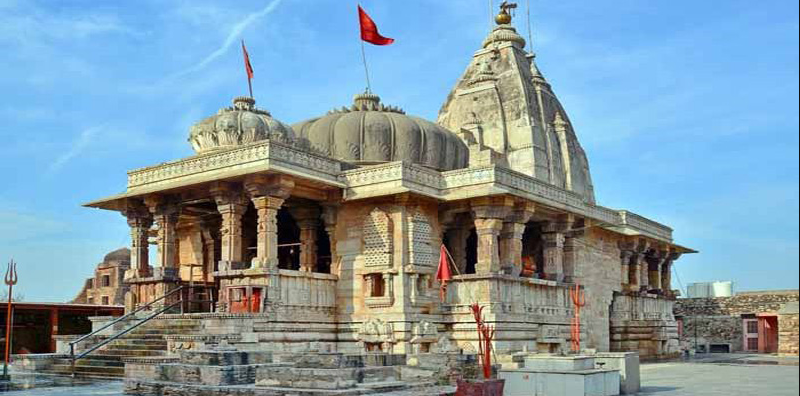
Kalika Mata Temple, located inside the Chittorgarh Fort, is one of the most revered temples in Rajasthan. Originally built in the 8th century as a temple dedicated to the Sun God, it was later transformed into a shrine of Goddess Kali in the 14th century.
The temple is a fine example of Rajput architecture, with beautifully carved pillars, intricate sculptures, and ancient stone walls that reflect the glory of medieval craftsmanship. Devotees visit this temple to seek blessings from Goddess Kali, the symbol of power and protection.
During festivals, especially Navratri, the temple becomes vibrant with rituals, devotional songs, and spiritual gatherings, attracting both pilgrims and tourists. Apart from its religious importance, the temple also offers a serene atmosphere and panoramic views of the Chittorgarh Fort complex.
- Location: Inside Chittorgarh Fort, Rajasthan
- Timings: 6:00 AM - 6:00 PM
- Entry Fee: Included in Chittorgarh Fort ticket
8. Sanwariaji Temple - The Beloved Lord Krishna Shrine of Rajasthan
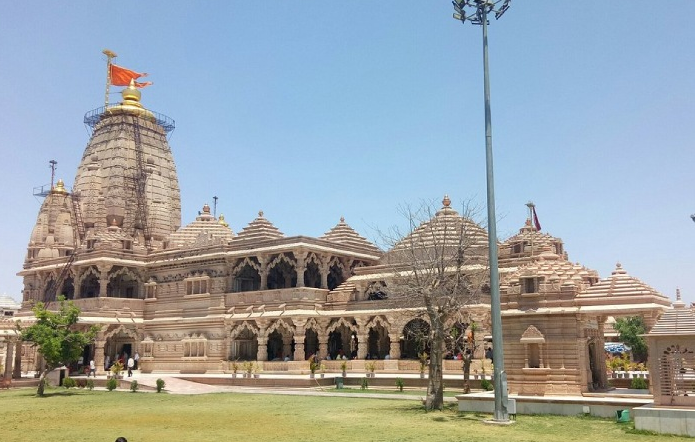
Sanwariaji Temple, also known as Sanwaliya Seth Temple, is one of the most famous and sacred temples of Lord Krishna in Rajasthan. Located near Chittorgarh on the Udaipur-Chittorgarh highway, this temple holds immense spiritual significance and attracts thousands of devotees every year.
According to legend, the idol of Lord Krishna in black stone was discovered by a farmer while plowing his field. The divine idol was installed here, and since then, Sanwariaji has been worshipped as a form of Lord Krishna (Shyam Baba).
The temple is beautifully built with marble architecture, intricate carvings, and golden decorations, making it a sight to behold. Devotees strongly believe that Sanwariaji fulfills the wishes of all who pray with pure devotion, especially in matters of wealth, health, and happiness.
Festivals like Janmashtami and Radha Ashtami are celebrated here with grandeur, when the temple glows with lights, bhajans, and devotional rituals.
- Location: Bhadsora, near Chittorgarh, Rajasthan
- Timings: 5:00 AM - 12:00 PM, 3:00 PM - 11:00 PM
- Entry Fee: Free
9. Sathis Deori Temple - The 27 Shrines of Chittorgarh
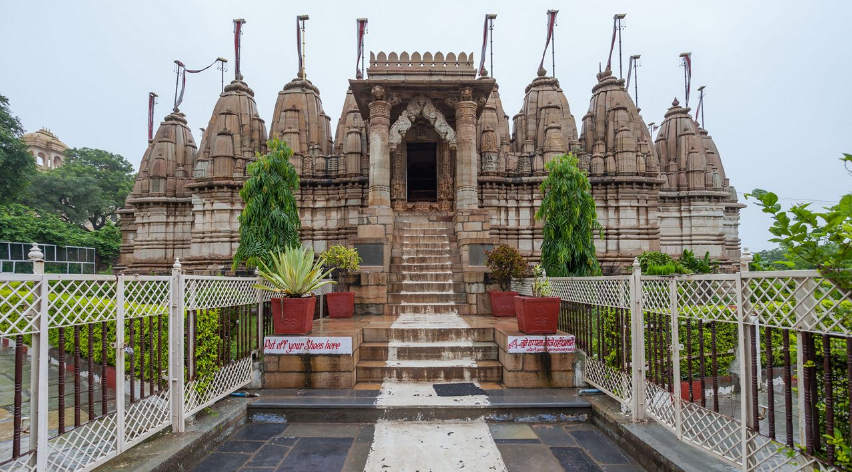
The Sathis Deori Temple, situated within the Chittorgarh Fort, is a sacred Jain temple complex dedicated to Lord Adinath, the first Tirthankara of Jainism. The name Sathis Deori translates to “27 shrines,” as the temple was originally believed to have consisted of 27 smaller shrines, though only a few remain today.
Built around the 10th-11th century, the temple is an excellent example of Jain architecture, featuring finely carved pillars, detailed sculptures, and stone artistry that reflect the rich heritage of the era. The sanctum houses the beautiful idol of Lord Adinath, worshipped with great reverence by Jain devotees.
Even though time has worn away many parts of the complex, the temple continues to stand as a symbol of devotion and architectural brilliance, attracting pilgrims, history lovers, and tourists alike.
- Location: Inside Chittorgarh Fort, Rajasthan
- Timings: 6:00 AM - 6:00 PM
- Entry Fee: Included in Chittorgarh Fort entry ticket
10. Ratan Singh Palace - The Riverside Beauty of Chittorgarh
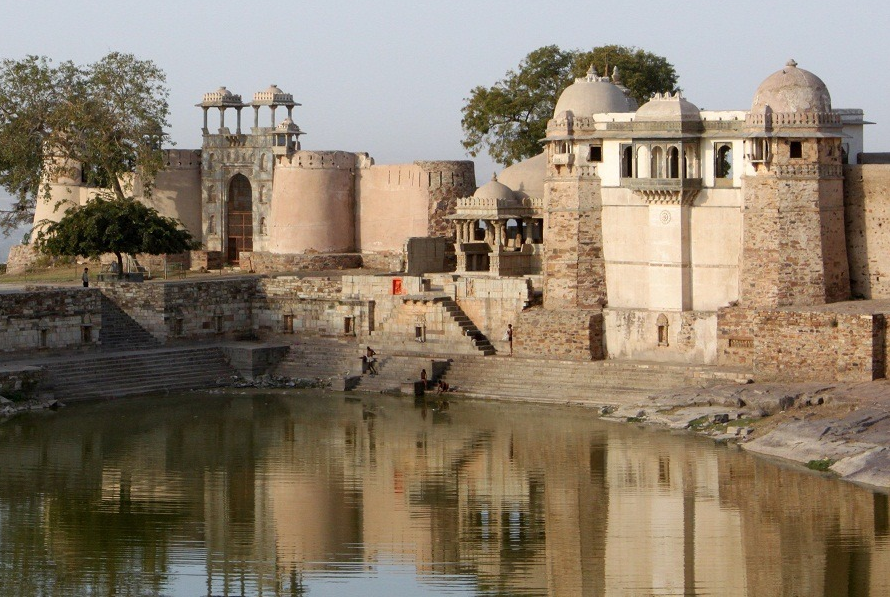
The Ratan Singh Palace, located inside the Chittorgarh Fort, is a lesser-known but historically significant monument. Built during the reign of Rana Ratan Singh II (1528-1531 AD), the palace served as a royal residence and is known for its strategic location on the banks of the Ratneshwar Talab (Lake).
The palace is surrounded by high walls and features gateways, courtyards, balconies, and beautifully carved pillars that showcase the artistry of Rajput architecture. Even though the palace is in ruins today, its charm lies in the picturesque lake view, which reflects the fort walls and creates a serene atmosphere.
Ratan Singh Palace also holds historical importance as it was one of the places associated with the Rajput battles against invaders. Visitors often explore it along with other grand monuments inside the fort.
- Location: Inside Chittorgarh Fort, Rajasthan
- Timings: 9:00 AM - 6:00 PM
- Entry Fee: Included in Chittorgarh Fort entry ticket
11. Samadhisvara Temple - The Ancient Shiva Shrine of Chittorgarh
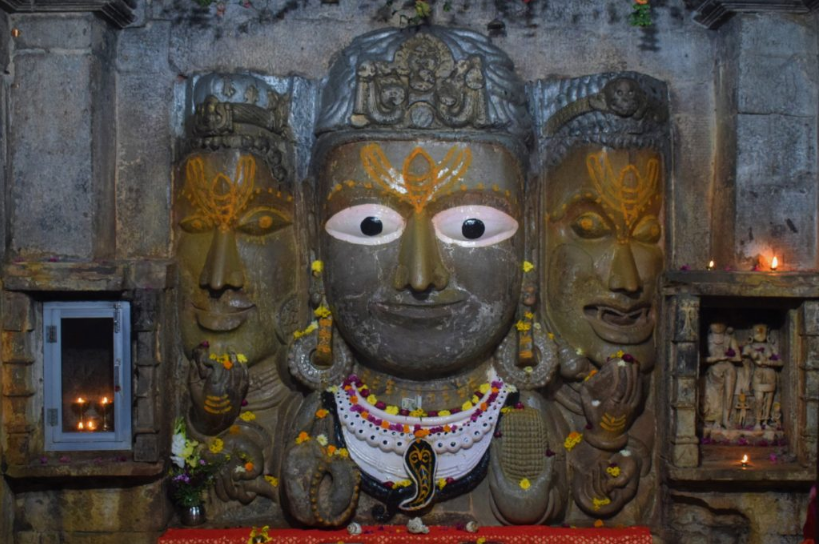
The Samadhisvara Temple, located within the Chittorgarh Fort, is one of the oldest and most revered temples dedicated to Lord Shiva. Originally built in the 11th century by King Bhoja of the Paramara dynasty, the temple was later renovated by the rulers of Chittor.
The temple houses a magnificent three-headed idol of Lord Shiva, symbolizing creation, protection, and destruction. The carvings on the temple walls beautifully depict scenes from Hindu mythology, celestial beings, and intricate floral patterns, making it a fine example of medieval Rajput and Solanki-style architecture.
Samadhisvara Temple is not only a religious site but also a peaceful retreat within the grand fort. Devotees and tourists visit to admire its spiritual aura, detailed stonework, and historical importance.
- Location: Inside Chittorgarh Fort, Rajasthan
- Timings: 6:00 AM - 6:00 PM
- Entry Fee: Included in Chittorgarh Fort ticket
12. Meera Temple - The Divine Abode of Bhakti in Chittorgarh
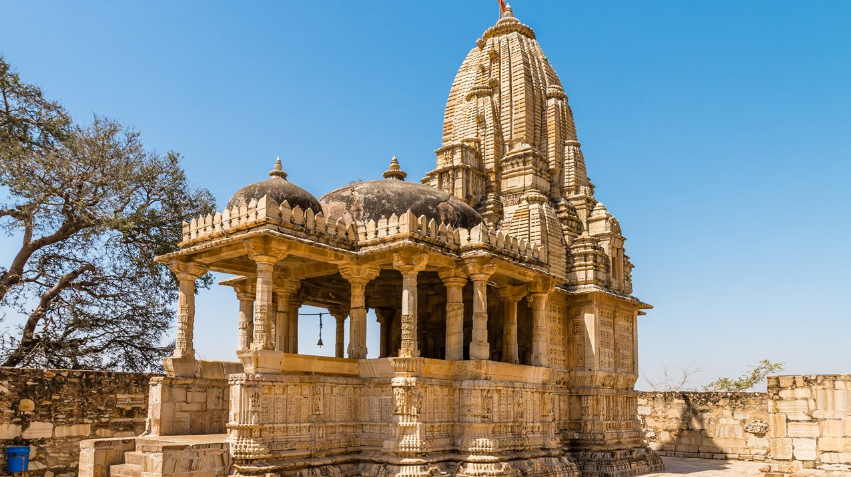
The Meera Temple, located inside the Chittorgarh Fort, is one of the most spiritual and culturally significant temples of Rajasthan. Built in the 16th century by Rana Kumbha, the temple is dedicated to Meera Bai, the Rajput princess of Merta and the devout saint-poetess who devoted her entire life to the worship of Lord Krishna.
The temple is a symbol of love, devotion, and surrender, where Meera Bai sang soulful bhajans in praise of Lord Krishna. The sanctum houses idols of Lord Krishna and Meera Bai, while the walls are adorned with carvings and inscriptions reflecting stories of devotion.
The architecture is simple yet elegant, featuring ornate pillars, domes, and arches that showcase the style of the period. The temple is visited by devotees, historians, and tourists who come to experience the spiritual legacy of Meera Bai.
During festivals like Janmashtami and Meera Mahotsav, the temple comes alive with devotional songs, cultural programs, and religious rituals.
- Location: Inside Chittorgarh Fort, Rajasthan
- Timings: 6:00 AM - 8:00 PM
- Entry Fee: Included in Chittorgarh Fort entry ticket
13. Shyam Temple - A Devotional Jewel of Chittorgarh
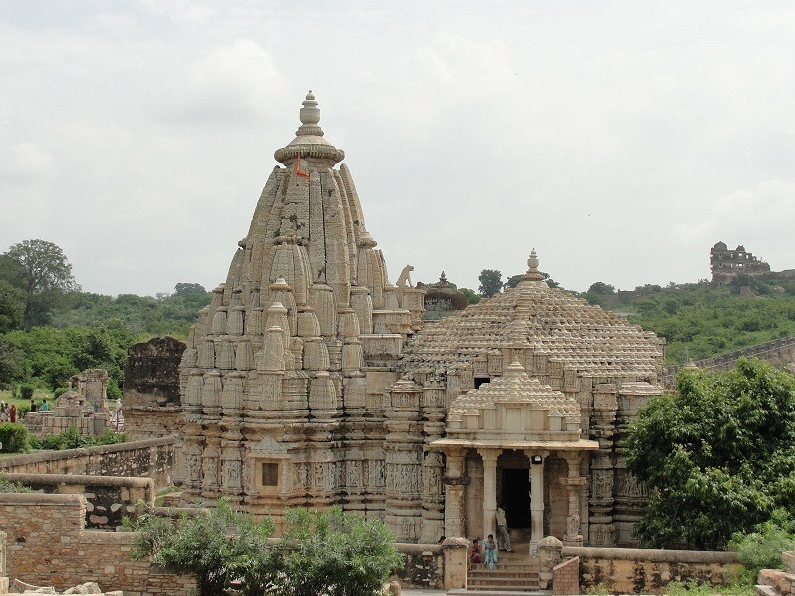
The Shyam Temple, located within the grand Chittorgarh Fort, is a sacred shrine dedicated to Varaha Avatar of Lord Vishnu. It was built in the 15th century by Rana Kumbha, who was a great patron of art, architecture, and religion.
The temple is admired for its intricate stone carvings, beautifully sculpted pillars, and detailed depictions of deities from Hindu mythology. Its architecture reflects the skill and devotion of the Rajput artisans of that era.
For devotees, the Shyam Temple is not just a place of worship but also a symbol of faith and spirituality. Many visitors to Chittorgarh Fort include this temple in their journey to seek blessings and admire its artistic beauty.
- Location: Inside Chittorgarh Fort, Rajasthan
- Timings: 6:00 AM - 6:00 PM
- Entry Fee: Included in Chittorgarh Fort entry ticket
14. Gaumukh Reservoir - The Sacred Water Tank of Chittorgarh
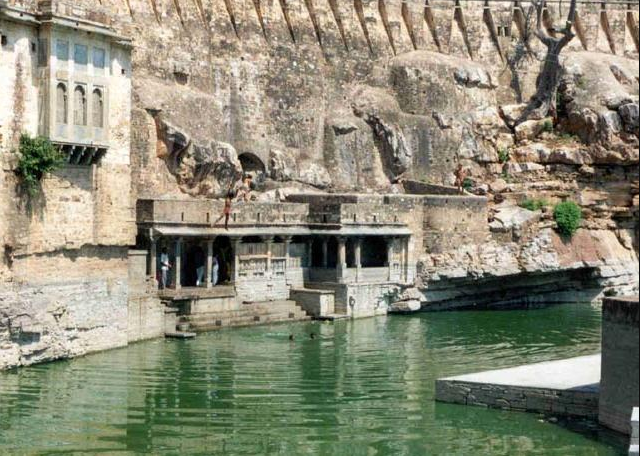
The Gaumukh Reservoir, located inside the Chittorgarh Fort, is one of the most important water bodies and sacred spots of the fort complex. The name Gaumukh (meaning “cow’s mouth”) comes from the natural spring shaped like a cow’s mouth, from which water continuously flows into the reservoir.
This reservoir was once a lifeline for the fort’s residents, providing water during battles and sieges. It is considered holy, and pilgrims often take a dip in its waters as it is believed to wash away sins.
Surrounded by rocky cliffs and temples, the reservoir also offers a serene and spiritual ambiance, making it a peaceful stop for visitors exploring the fort. Devotees often feed fish in the reservoir as part of a religious ritual.
- Location: Inside Chittorgarh Fort, Rajasthan
- Timings: 9:00 AM - 6:00 PM
- Entry Fee: Included in Chittorgarh Fort entry ticket
15. Mahanal Temple - The Ancient Shiva Shrine near Chittorgarh
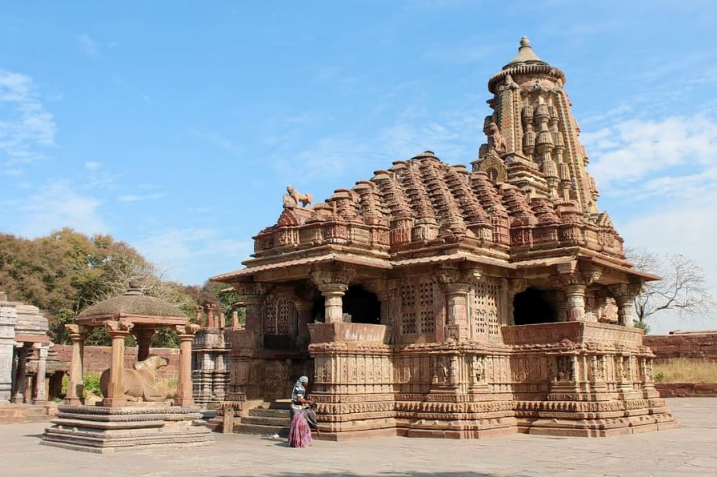
The Mahanal Temple, located in Mandalgarh near Chittorgarh, is a historic temple dedicated to Lord Shiva. Dating back to the 11th century, this temple is a fine example of early medieval architecture and showcases the devotion and craftsmanship of the era.
The temple houses a sacred Shivlinga, worshipped by devotees with great reverence. Built with stone, the temple walls and pillars are adorned with intricate carvings of deities, floral motifs, and mythological figures, reflecting the artistry of Rajput and Solanki styles.
Though lesser-known compared to the temples inside Chittorgarh Fort, Mahanal Temple offers a peaceful and spiritual atmosphere, making it an ideal spot for those who seek history and divinity away from the crowds.
- Location: Mandalgarh, near Chittorgarh, Rajasthan
- Timings: 6:00 AM - 6:00 PM
- Entry Fee: Free
16. Sitamata Wildlife Sanctuary - A Green Paradise of Rajasthan
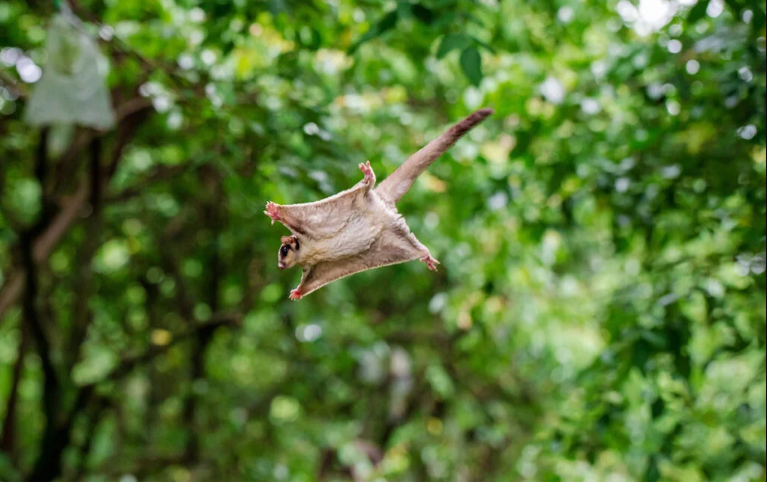
The Sitamata Wildlife Sanctuary, located near Pratapgarh in Rajasthan, is one of the most beautiful and biodiversity-rich sanctuaries in the state. Spread across 423 sq. km, it is named after Goddess Sita, as legends say she spent some years of her exile here.
The sanctuary is a unique ecological zone where the Aravalli, Vindhya, and Malwa hill ranges meet, making it a rich habitat for a variety of flora and fauna. It is home to over 50 species of mammals, 325 species of birds, and 40 species of reptiles.
One of the highlights of the sanctuary is the presence of the Flying Squirrel, which can be spotted gliding from one tree to another at dusk. Other animals include leopards, jungle cats, hyenas, jackals, sambhar, chinkara, nilgai, wild boar, and langurs.
Apart from wildlife, the sanctuary also has historical and mythological significance, with ancient temples and streams enhancing its natural beauty.
Location: Pratapgarh District, Rajasthan
Timings: 6:00 AM - 6:00 PM
Entry Fee: ₹20 (Indians), ₹80 (Foreigners) - approx.
17. Bassi Wildlife Sanctuary - A Hidden Gem near Chittorgarh
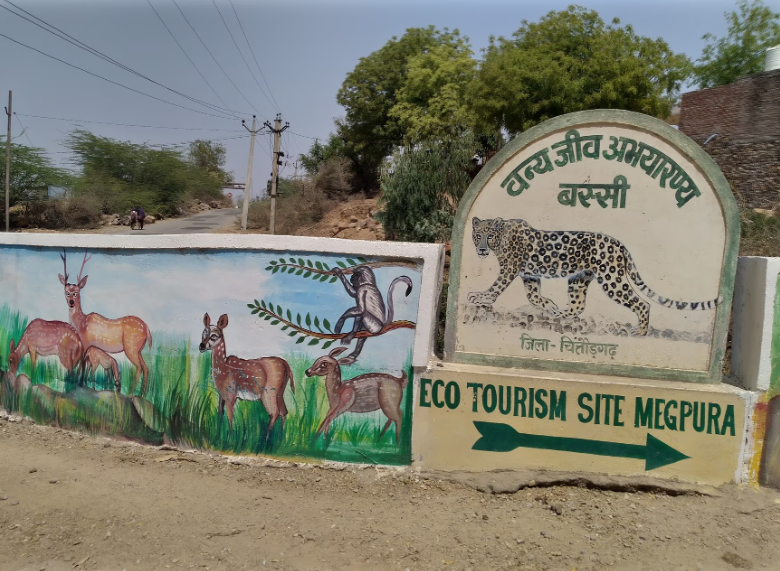
The Bassi Wildlife Sanctuary, located about 5 km from Bassi village and 25 km from Chittorgarh, is a beautiful natural reserve spread across 15,000 hectares. Nestled in the Vindhyan Hills, it is a peaceful retreat for wildlife lovers, nature photographers, and birdwatchers.
The sanctuary is home to a wide range of animals, including panthers, jackals, hyenas, wild boars, antelopes, and mongoose. It is also rich in birdlife, with species like peacocks, partridges, cranes, and wild fowls frequently spotted here.
Another highlight is the presence of two scenic water reservoirs, Orai and Bassi Dams, which not only support the sanctuary’s wildlife but also add to its natural charm. The lush green forest, combined with the backdrop of hills, makes it a great escape for travelers seeking peace and adventure.
- Location: Near Bassi Village, 25 km from Chittorgarh, Rajasthan
- Timings: 6:00 AM - 6:00 PM
- Entry Fee: ₹20 (Indians), ₹80 (Foreigners) - approx.
18. Bhaisrodgarh Wildlife Sanctuary - The Riverside Wilderness of Rajasthan
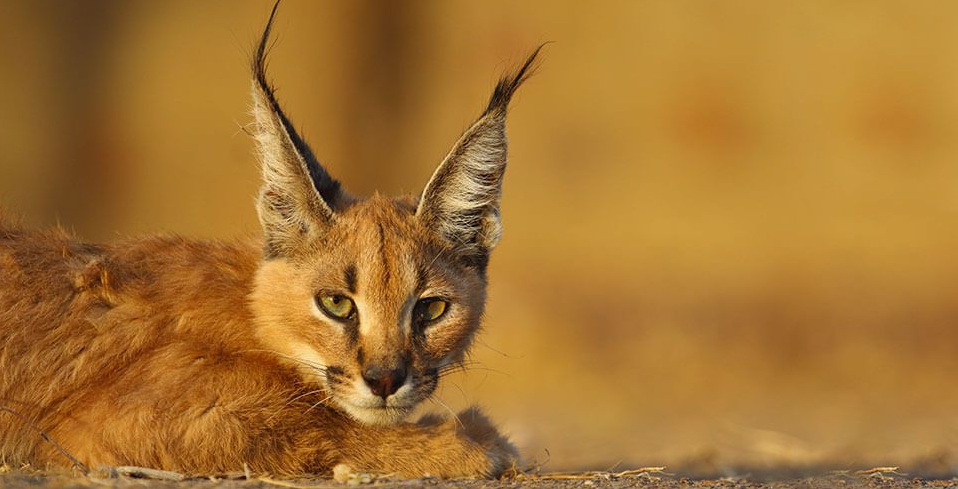
The Bhaisrodgarh Wildlife Sanctuary, located about 55 km from Kota in Rajasthan, is a lesser-known yet stunning sanctuary established in 1983. Spread along the banks of the Chambal and Kali Sindh Rivers, it is a paradise for nature lovers, wildlife enthusiasts, and birdwatchers.
The sanctuary is home to a variety of animals including leopards, hyenas, jackals, foxes, antelopes, sambhar, and chinkaras. The rivers also support aquatic life, making it a thriving ecosystem. Birdwatchers can spot partridges, peacocks, storks, and migratory birds during the winter season.
The lush forests, combined with the riverside charm, make Bhaisrodgarh a peaceful retreat away from city life. It is also culturally significant, as nearby villages reflect the traditional Rajasthani lifestyle, giving travelers a blend of nature and heritage.
- Location: Kota District, Rajasthan
- Timings: 6:00 AM - 6:00 PM
- Entry Fee: ₹20 (Indians), ₹80 (Foreigners) - approx.
19. Mandalgarh Fort - The Battle-Scarred Fortress of Rajasthan
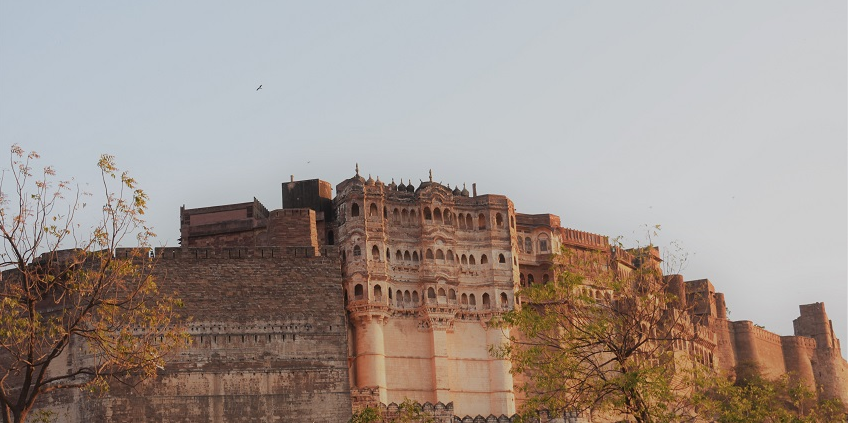
The Mandalgarh Fort, located in Bhilwara district of Rajasthan, is one of the state’s oldest and historically significant forts. Built around the 14th century, the fort witnessed numerous battles between the Rajputs and Mughals, and later between the Rajputs and Marathas. Its strategic location on a hilltop made it a stronghold of immense military importance.
Spread over 6 km, the fort is surrounded by thick stone walls and offers a commanding view of the surrounding plains. Inside, visitors can explore old palaces, temples, stepwells, and ruins that narrate tales of valor and sacrifice. The fort also has links with Rana Kumbha, one of the greatest Rajput rulers, who renovated and strengthened it during his reign.
Though partly in ruins today, Mandalgarh Fort continues to reflect the glorious heritage of Rajputana, making it a must-visit for history lovers and offbeat travelers. Its raw and rustic charm, along with panoramic views, leave a lasting impression.
- Location: Mandalgarh, Bhilwara District, Rajasthan
- Timings: 9:00 AM - 6:00 PM
- Entry Fee: Free
20. Tulja Bhawani Temple - A Sacred Shakti Peeth of Chittorgarh
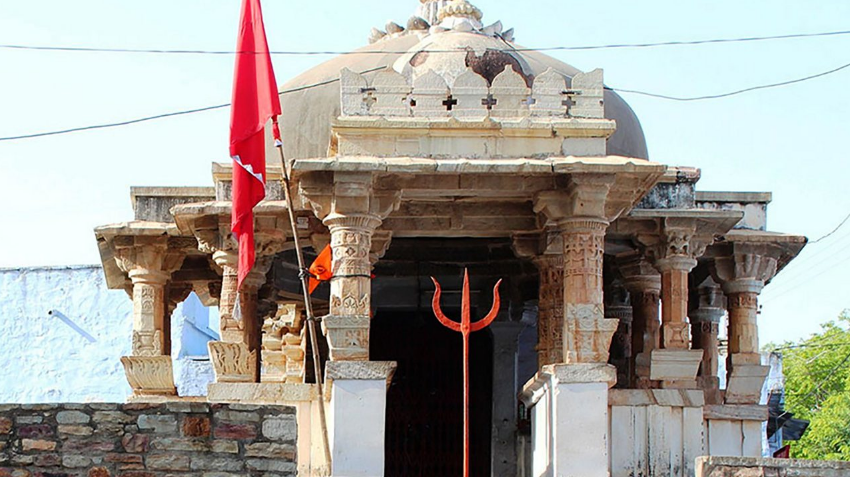
The Tulja Bhawani Temple, located within the historic Chittorgarh Fort, is a revered shrine dedicated to Goddess Tulja Bhawani, a powerful form of Maa Durga. It is believed that the Mewar rulers worshipped the goddess as their kuldevi (family deity) and sought her blessings before heading into battles.
The temple stands as a symbol of faith, strength, and devotion, reflecting the deep spiritual connection of the Rajputs with their guardian deity. Architecturally, the temple is built in traditional Rajputana style, featuring carved pillars, sanctum, and a peaceful courtyard that exudes divinity.
According to legends, Goddess Tulja Bhawani is considered the protector of the Chittorgarh Fort, and her blessings were believed to bring courage and victory to the Rajput warriors. Even today, devotees and tourists visit the temple to seek peace, strength, and prosperity.
- Location: Inside Chittorgarh Fort, Rajasthan
- Timings: 6:00 AM - 8:00 PM
- Entry Fee: Free (fort entry charges applicable)
21. Bassi Fort - A Blend of History and Heritage
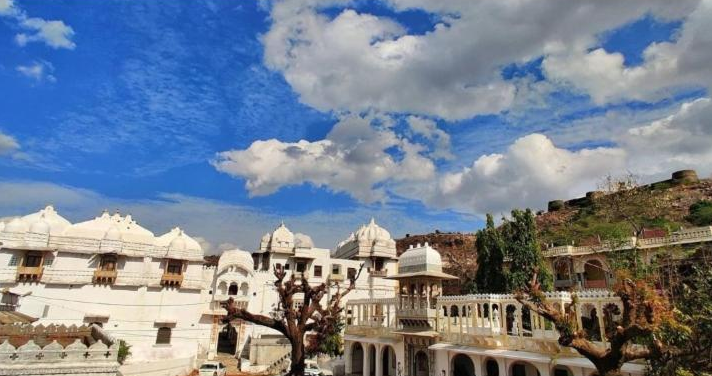
The Bassi Fort, located near Bassi town in the Chittorgarh district of Rajasthan, is a magnificent historical fort that reflects the valor and grandeur of Rajput architecture. Built in the 16th century by Rao Chunda Ji, a ruler of Mewar, this fort stands as a testimony to the glorious past of the region.
Surrounded by the Aravalli Hills, the fort is known for its massive gateways, intricately designed balconies, and spacious courtyards. It overlooks beautiful landscapes, including the Bassi Wildlife Sanctuary and tranquil lakes, adding to its charm.
Bassi Fort has been partially converted into a heritage hotel, offering visitors a chance to experience the royal lifestyle of Rajput kings. Staying here gives a glimpse of Rajasthan’s regal past with modern comforts.
- Location: 25 km from Chittorgarh, Rajasthan
- Best Time to Visit: October - March
- Entry Fee: Free (charges apply for hotel stay)

 Best Places to Visit in Chail, C..
Best Places to Visit in Chail, C.. KAILASH MANSAROVA YATRA FIXED DE..
KAILASH MANSAROVA YATRA FIXED DE.. Bundi - The Hidden Gem of Rajast..
Bundi - The Hidden Gem of Rajast.. Alleppey Travel Guide - Best Pl..
Alleppey Travel Guide - Best Pl.. Ujjain: The Ancient Spiritual Ci..
Ujjain: The Ancient Spiritual Ci.. Mahabat Maqbara, Junagadh - A Ma..
Mahabat Maqbara, Junagadh - A Ma.. National Rail Museum Delhi - Jou..
National Rail Museum Delhi - Jou.. Bihar - The Land of Ancient Wisd..
Bihar - The Land of Ancient Wisd.. Kutch Museum - The Oldest Museum..
Kutch Museum - The Oldest Museum.. Shri Badrinath Temple | History,..
Shri Badrinath Temple | History,.. Spiti Valley Travel Guide – Ad..
Spiti Valley Travel Guide – Ad.. Discover Naina Devi Temple in Na..
Discover Naina Devi Temple in Na.. Mandvi: The Coastal Jewel of Kut..
Mandvi: The Coastal Jewel of Kut.. Pacific Mall Delhi - Shopping, F..
Pacific Mall Delhi - Shopping, F.. Jim Corbett National Park Travel..
Jim Corbett National Park Travel..
